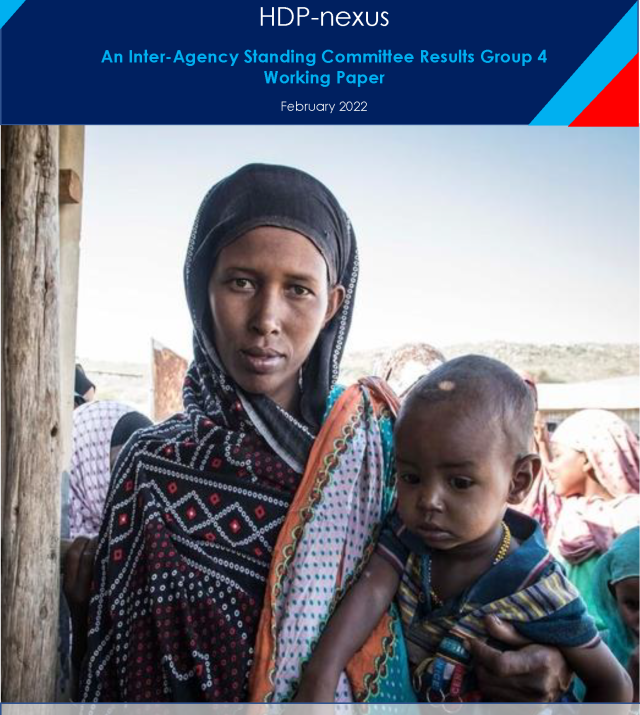
Advancing the Humanitarian-Development-Peace Nexus approach through IASC Global Clusters

This advisory note is designed to support Global Clusters in implementing the Humanitarian-Development-Peace Nexus (HDPN) approach. It is primarily intended for Cluster Lead Agencies and clusters/sectors at the country level. The purpose of this resource is to foster coherence and complementarity between lifesaving interventions, development activities, and peace initiatives, ultimately contributing to collective outcomes in humanitarian contexts. Users can employ this note to facilitate collaborative data collection, analysis, planning, and programming, ensuring coordination with development and peace actors under the leadership of the Resident Coordinator/Humanitarian Coordinator (RC/HC).
This guidance document serves as a practical tool for Cluster Lead Agencies and partners to engage effectively with development and peace actors in the context of the Humanitarian-Development-Peace Nexus (HDPN) approach. It is tailored to support clusters already advancing HDPN strategies and aims to further implementation efforts. Specifically targeting humanitarian, development, and peace (HDP) actors, the document provides entry points and actionable steps for applying a nexus approach in country-level assessment, analysis, planning, programming, and response coordination. It complements existing frameworks and tools, offering insights into the implications for coordinators' work and emphasizing the importance of flexibility to address unique operational contexts effectively.
This toolkit offers cluster-specific guidance for implementing the Humanitarian-Development-Peace Nexus (HDPN) approach in diverse operational contexts. Tailored to the unique needs and challenges of each cluster/sector, the toolkit builds on existing frameworks, approaches, and tools. It provides adaptable strategies and practical recommendations for coordinators to promote coherence and complementarity between humanitarian, development, and peace activities. By offering flexible solutions, the toolkit enables clusters to address context-specific requirements while advancing collective outcomes and priorities outlined in Humanitarian Response Plans (HRPs) and United Nations Sustainable Development Cooperation Frameworks (UNSDCFs).

